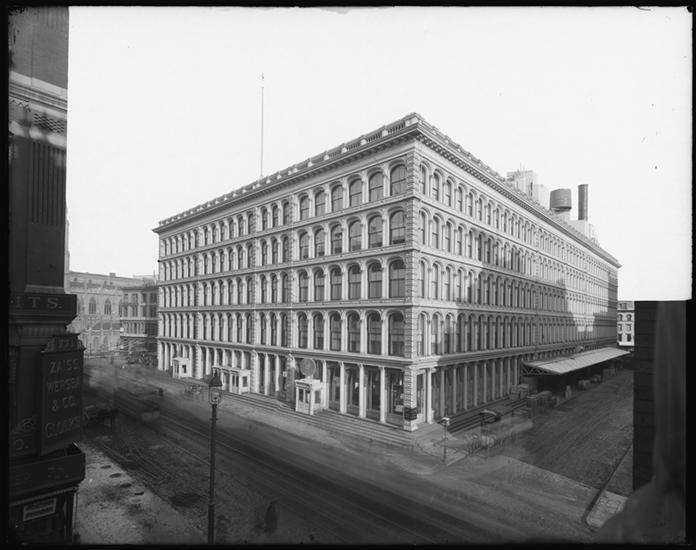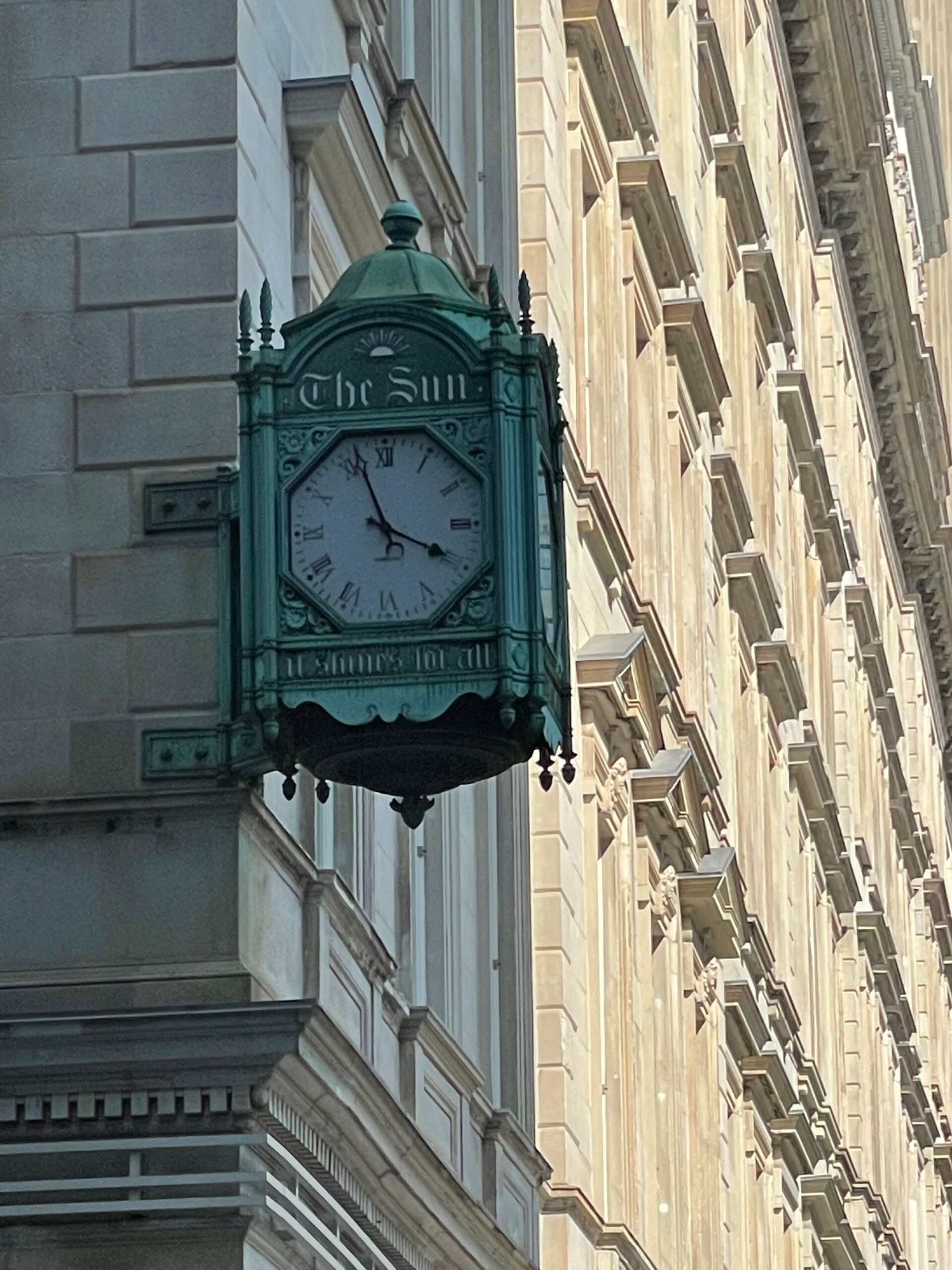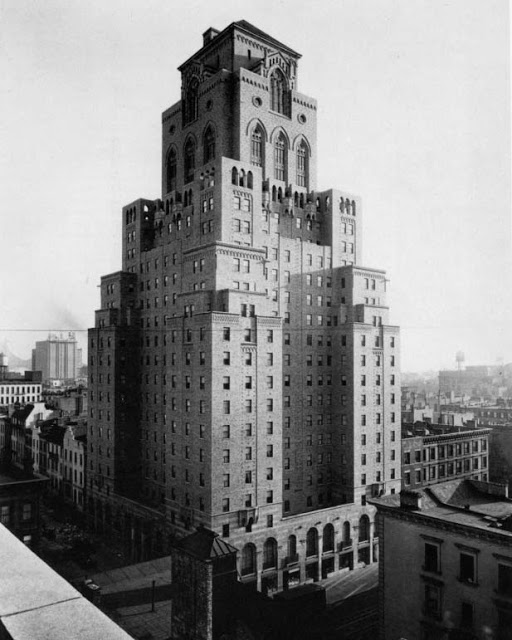Behind every great city there are great women. New York City, as the greatest city in the world, has had the greatest women of the world. But the world has not always been great towards them, nor grateful, nor kind.
There was a time, until 1965, when a single woman travelling alone, could not check into a hotel or dine in its restaurant unless accompanied by a man who would vouch for her. In 1908 Ms. Harriet Stanton Blatch sued the Hoffman House, which had refused to admit her to its roof garden after 6 PM without a male escort. The court ruled against her since “all that is required to be served a meal or a drink is to have a male escort.” Even strong, brilliant women had to fight to be seen as more than just the wife, the mother, the daughter, the lover of… a man. The struggle against stereotype, religion, culture and morals can be observed through the unique history of New York hotels. And once again, it is only natural that New York City should be the birthplace of the first hotel for women.

In the early to mid-19th century a very large number of single women moved to New York City to escape poverty, but also to explore the possibility of a new independent life. The “Angel[s] of the Home” (as they were often described by men in the Victorian era) were tired of being the “Angels of the house-keeping”. They probably felt what Betty Friedan still felt and wrote in 1973: “I, like other women, thought there was something wrong with me because I didn’t have an orgasm waxing the kitchen floor”. Driven by the increased demand for female labor, and although paid much less than men (nothing new here), they were, however, finally able to secure jobs in their own right. In 1840 only 10% of women had jobs, and by 1920 it was 24% (43% in 1970 and 61% in 2000) which created a serious problem for working women and for the city: housing.
With no hotels or safe places that allowed women to stay, they often ended up in very dangerous and squalid dwellings. The common idea was that women, unlike men, could not be trusted to be left “unsupervised,” as their morals, purity and chastity needed to be preserved, hence the opening of “Moral Homes,” often run by religious entities, with very strict rules and restrictions that were designed to enforce “good behavior” such as morning prayers, visitors only in the parlor, and no men. The house matron was called “mother” and the guests, “daughters”. The YWCA opened in 1891 at 14-16 East 16th Street with rent to be paid in advance, no cooking, no washing and the electricity was out at 11 PM.

The first full service “Working Women’s Hotel” opened up in 1878 on Fourth Avenue (Park Avenue) between 32nd and 33rd Streets as the Hotel Stewart. It was commissioned by Irish businessman immigrant Alex Turney Stewart who had become one of the richest men in the United States and had built New York City’s first department store at 280 Broadway, (which can still be seen as the New York Sun newspaper building). Mr. Stewart stated that the hotel was for “industrious young women … to foster individuality and self-dependence”. It could house 1,500 working women, making it the largest hotel of those days. The hotel showcased a magnificent cast iron structure of columns and lunettes and an elegant courtyard; for seven dollars a week you could rent a private room, six if you were sharing. Sadly, this great experiment lasted only forty-five days, when Mr. Stewart realized that it was not profitable and it was quickly converted into a luxury hotel and renamed the Park Avenue Hotel. Tragically, it was demolished in 1927, making it one of the lost treasures of New York.

It took until 1903 for another women’s hotel to be built. The Redbury Hotel, as it is currently called, was designed in an elegant Renaissance Revival Style on 29th Street between Madison and Park Avenues. It had a generic but unequivocal name: “Women’s Hotel”, and then it went on to have more: The Martha Washington, Thirty Thirty, Lola, King & Grove and back to Martha Washington and, now, the Redbury. The importance of the Martha Washington Hotel in the history of Gotham is undeniable, the first concept of applied feminism to a hotel, so much so that it became the headquarters of a feminist group—the Interurban Women Suffrage Council.
The hotel was an immediate success and had a long waiting list. It was meant for independent, white collar business women such as teachers, musicians, writers, doctors, and nurses. All of the amenities were geared towards them: a drug store, manicurist, a tailor shop. Many of the shares were owned by women, although it also had famous investors such as John D. Rockefeller, Helen Gould and Olivia Sage. The hotel was such a sensation that in 1904 the New York Times reported that organized tours now passed in front of the hotel. “The observation automobiles have now included it [the hotel] among the places of interest to point out to the out-of-town sightseers, and one would suppose that the inmates were a new kind of freak that had not yet been classified in a museum or menagerie”.

The Hotel did not have the rigid restrictions of the “Moral Homes” and women had the same freedom that their male counterparts had in other hotels.
The Martha Washington Hotel broke a taboo when in 1933, it also applied for a liquor license as, “women as well as men have been utilizing places where drinks are served”.
Poet Sara Teasdale and Actress Louise Brooks stayed at the Martha Washington Hotel as did many famous women, including Hollywood movie star Veronica Lake who, at only forty years old, after her career collapsed, was living and working at the Martha Washington as a cocktail waitress under the name of Connie de Toth.
Soon after the tabloids leaked the story, fans sent her money which allowed her a brief comeback. She died ten years later due to heavy drinking.
In the 1920s, women had just gained the right to vote, the City of New York was booming and many new women’s hotels opened up: the Virginia Hotel, the Irvin, and the Rutledge (today the Ramada Inn).
Two iconic hotels were the Allerton Hotel designed by architect Arthur Loomis Harmon in 1923 by the Allerton group, which was committed to building hotels/clubs for single men and women all over the U.S, and the most famous of all, the Barbizon Hotel, built by architects Murgatroyd & Ogden.

The Allerton Hotel in New York, now the Renaissance 57, had a ballroom, a library and a roof garden, while the Barbizon also had an elegant lobby, a gym and a pool.
All of the best amenities of those days were available, and both hotels were an enormous success. Many great women stayed at the Barbizon: Princess Grace Kelly, Peggy Cass, Candice Bergen, Liza Minelli and even the unsinkable Molly Brown. Everything was available but…men. As reported by the New York Times in 1977, “In Hollywood, I managed to sneak a man into the Studio Club”, Charlo Daniels, an actress and former resident said, “But not here, not at the Barbizon. And I certainly tried”.
The magnificent art deco style Beekman Tower Hotel, also called the Panhellenic Tower or “All Greek Tower,” was built in 1928 as a club and hotel for women in college sororities, as can be deduced from the Greek letters carved in the façade of the hotel, and had an amazing rooftop that can still be enjoyed today. But by the mid-30s, it had already shifted to non-sorority guests of any gender.

By the early 70s hotels for women, like New York City itself, went into a slump, times had changed and even for single women it was acceptable to check into regular hotels without judgment, but not everywhere. The Plaza Hotel, still in 1969, physically removed the table where Betty Friedan sat in the “men only” Oak Room.
In 1977, with no sense of irony, the New York Times quoted former General Manager of the Barbizon, Hugh Connor, as saying that from the 40s to the 70s “all guests were graded either ‘A’ the youngest up to 28 years old, ‘B’ from 28 to 38 and ‘C’ for older women. The younger, the better, we felt”.
New York hotels had helped create a safe haven for women, but a safe haven from men’s ingrained misogyny has proven much harder to create and, to paraphrase the song from “Hamilton”, all men are created equal, but women are still waiting to be included in the sequel.











